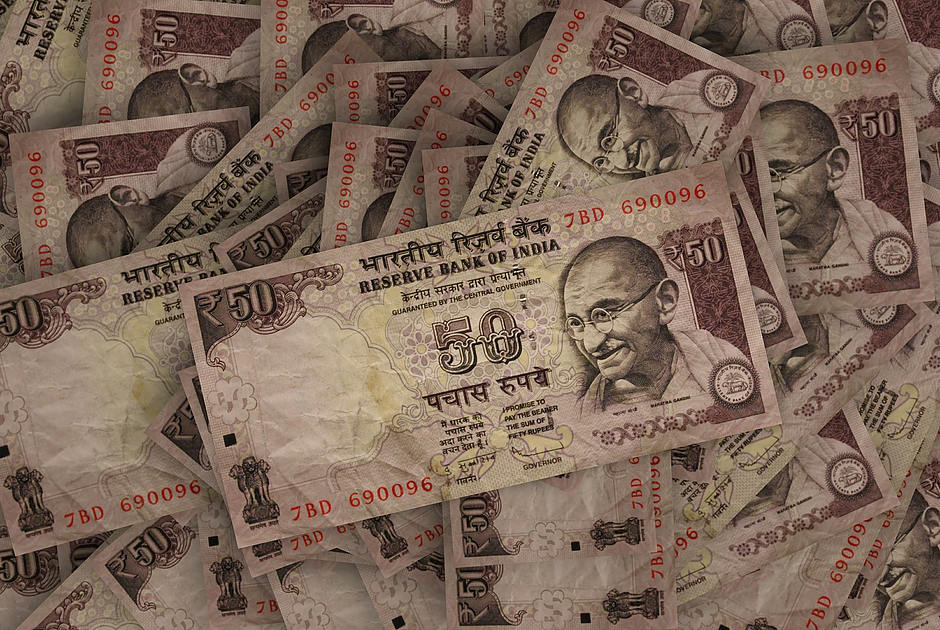Created
: 2024.11.20














![]() 2024.11.20 11:58
2024.11.20 11:58
The Indian Rupee (INR) loses traction on Wednesday. The local currency remains under some selling pressure due to the renewed US Dollar (USD) demand from importers and rising geopolitical tensions after Russian officials said that Ukraine used US ATACMS missiles to strike Russian territory for the first time, while Russian President Vladimir Putin approved an updated nuclear doctrine.
Furthermore, sustained portfolio outflows contribute to the INR's downside. However, any significant depreciation of the Indian Rupee might be limited as the Reserve Bank of India (RBI) is likely to sell the USD to support the INR.
In the absence of top-tier economic data released from the US and India, the USD price dynamics will continue to play a key role in influencing the pair. The Federal Reserve (Fed) Lisa Cook and Michelle Bowman are scheduled to speak later on Wednesday.
The Indian Rupee weakens on the day. However, the constructive view of the USD/INR pair remains intact, with the price holding above the ascending channel throwback support on the daily chart. The upward momentum of the pair is reinforced by the 14-day Relative Strength Index (RSI), which stands above the midline near 65.55, suggesting that the path of least resistance remains to the upside.
The all-time high of 84.45 acts as an immediate resistance level for USD/INR. A break above this level could pave the way to the 85.00 psychological level.
In the bearish case, any follow-through selling below the resistance-turned-support level at 84.35 could be enough to attract some sellers and take the pair back down to the 84.00-83.90 region, representing the round mark and the 100-day EMA.
The Indian Rupee (INR) is one of the most sensitive currencies to external factors. The price of Crude Oil (the country is highly dependent on imported Oil), the value of the US Dollar - most trade is conducted in USD - and the level of foreign investment, are all influential. Direct intervention by the Reserve Bank of India (RBI) in FX markets to keep the exchange rate stable, as well as the level of interest rates set by the RBI, are further major influencing factors on the Rupee.
The Reserve Bank of India (RBI) actively intervenes in forex markets to maintain a stable exchange rate, to help facilitate trade. In addition, the RBI tries to maintain the inflation rate at its 4% target by adjusting interest rates. Higher interest rates usually strengthen the Rupee. This is due to the role of the 'carry trade' in which investors borrow in countries with lower interest rates so as to place their money in countries' offering relatively higher interest rates and profit from the difference.
Macroeconomic factors that influence the value of the Rupee include inflation, interest rates, the economic growth rate (GDP), the balance of trade, and inflows from foreign investment. A higher growth rate can lead to more overseas investment, pushing up demand for the Rupee. A less negative balance of trade will eventually lead to a stronger Rupee. Higher interest rates, especially real rates (interest rates less inflation) are also positive for the Rupee. A risk-on environment can lead to greater inflows of Foreign Direct and Indirect Investment (FDI and FII), which also benefit the Rupee.
Higher inflation, particularly, if it is comparatively higher than India's peers, is generally negative for the currency as it reflects devaluation through oversupply. Inflation also increases the cost of exports, leading to more Rupees being sold to purchase foreign imports, which is Rupee-negative. At the same time, higher inflation usually leads to the Reserve Bank of India (RBI) raising interest rates and this can be positive for the Rupee, due to increased demand from international investors. The opposite effect is true of lower inflation.
![]()
Created
: 2024.11.20
![]()
Last updated
: 2024.11.20

FXStreet is a forex information website, delivering market analysis and news articles 24/7.
It features a number of articles contributed by well-known analysts, in addition to the ones by its editorial team.
Founded in 2000 by Francesc Riverola, a Spanish economist, it has grown to become a world-renowned information website.
We hope you find this article useful. Any comments or suggestions will be greatly appreciated.
We are also looking for writers with extensive experience in forex and crypto to join us.
please contact us at [email protected].
Disclaimer:
All information and content provided on this website is provided for informational purposes only and is not intended to solicit any investment. Although all efforts are made in order to ensure that the information is correct, no guarantee is provided for the accuracy of any content on this website. Any decision made shall be the responsibility of the investor and Myforex does not take any responsibility whatsoever regarding the use of any information provided herein.
The content provided on this website belongs to Myforex and, where stated, the relevant licensors. All rights are reserved by Myforex and the relevant licensors, and no content of this website, whether in full or in part, shall be copied or displayed elsewhere without the explicit written permission of the relevant copyright holder. If you wish to use any part of the content provided on this website, please ensure that you contact Myforex.
Myforex uses cookies to improve the convenience and functionality of this website. This website may include cookies not only by us but also by third parties (advertisers, log analysts, etc.) for the purpose of tracking the activities of users. Cookie policy